Anciently known as Rosito or Rosetum already in Roman age, within the Daunian mountains there is a small village which, beyond appearances, contains an important history and nowadays is a destination renowned above all for its natural landscapes and finest food, such as honey and truffles: we are in Roseto Valfortore!
The curious name of this town originates from the union of two characteristic elements of the territory: the wild rose, a native floral species that grows in this area, as well as its symbol, and the presence of the Fortore river and its upper valley to the North-West. Geographically, Roseto Valfortore is located on the border between Apulia and Campania, precisely with the province of Benevento, making it an unmissable stage on a long travel itinerary between these two splendid regions of South Italy. Would you like to know more? Read this article carefully to discover our travel itinerary step by step through unique places and experiences!

Where is Roseto Valfortore: discover the landscape of Daunia
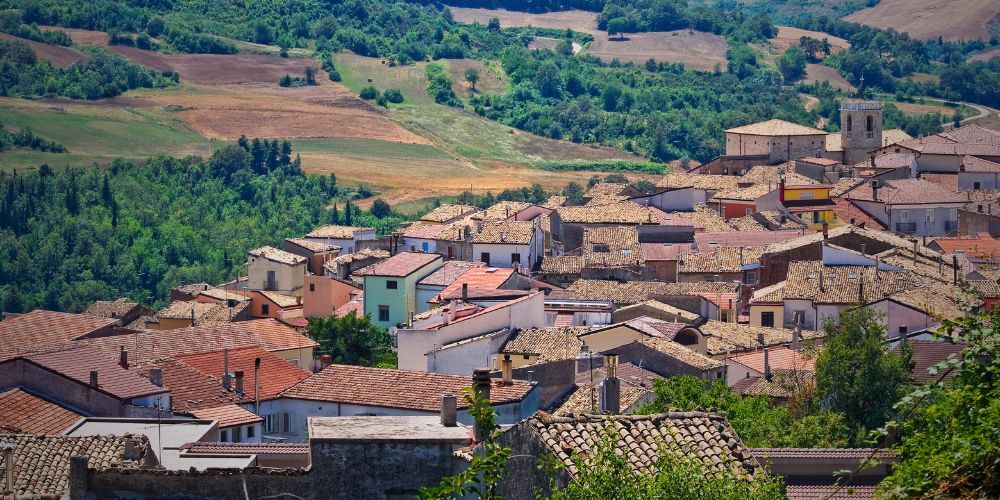
Roseto Valfortore is located over 600 meters above sea level within the Daunian mountains, in the Western-most part of the province of Foggia, in Apulia. Its territory is framed by greenery and is dominated by the presence of natural beauties that attract tourists looking for holidays dedicated to well-being and relaxation in touch with land, water and air.
In fact, near Roseto Valfortore, in addition to the aforementioned Fortore river, it is possible to venture around and discover many other evocative places. Among these, especially the following stand out: Monte Cornacchia, the roof of Apulia high over 1000 meters where it is also possible to visit one of the Italian Big Benches with a breathtaking view over the region; the lush Vestruscelli forest, part of the Faeto forest next to Roseto, one of the "homes" of the Apennine wolf where wild roses and truffles grow; the fascinating waterfalls of the Freddo stream, further South of the Cornacchia; and the Via Francigena within Daunia, one of the most famous paths in the world that crosses the territory further South of Faeto to get to Monte Sant'Angelo.
What to see in Roseto Valfortore: a walk through the village
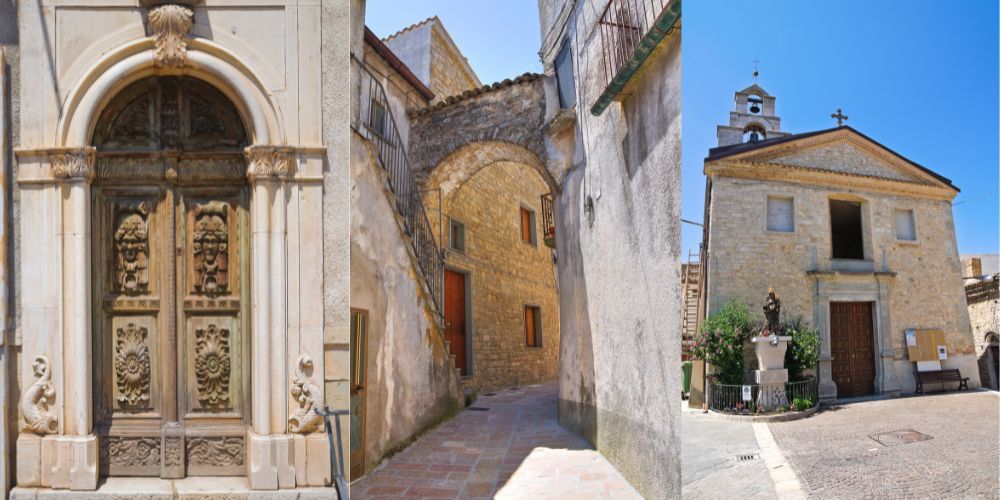
As anticipated, Roseto Valfortore is a village with a very ancient history which over the centuries has experienced the presence on the territory of ancient Italic peoples, the Romans, the Longobards and the Angevins, without forgetting the dominion of some of the most influential Italian aristocratic families such as the Di Capua, the Lombardo and the Saggese before becoming an autonomous municipality in Risorgimento age. For the most curious visitors, we also inform you about the foundation of the borough called Roseto in Pennsylvania, in the United States, founded by some citizens who decided to leave and seek for their fortune on the other side of the world between the nineteenth and twentieth centuries.
So, let's head discovering the things to see in Roseto Valfortore by walking through its streets and its monuments, of course made of stone according to the ancient professional art of stonemasons (a characteristic shared with Oratino, in Molise), highly skilled masters of traditional craftsmanship that have now disappeared. Here everything, or almost, is carved into the rock. After passing the Arco della Terra (Arch of the Earth), the ancient entrance gate to the historic village, you will be in Piazza Bartolomeo III Di Capua which houses the ancient baronial palace with its particular circular tower and, a little further on, there is the small Church of St. Filippo Neri, patron saint of the city from the first half of the seventeenth century. Continuing the walk in the village you come across two other fascinating churches: the Church of St. Maria Assunta, built at the beginning of the sixteenth century, on whose stone balustrade some iconic symbols of Roseto are carved in stone, such as the wild rose and the feudal coat of arms of the Di Capua family, and the Church of St. Nicholas, one of the most loved sains by Apulians. On the Southern side of the town you get to the splendid amphitheater and belvedere Giro Coste, overlooking the Vetruscelli forest. Other must-visit attractions include the stonce-crafted fountains made by the masters of Roseto; while outside the town, towards South-West, we suggest you visiting one of the ancient mills enjoying an amazing view of a downhill avenue surrounded by nature.
Honey and truffles: the food excellences of Roseto Valfortore

Before leaving together for this fantastic travel itinerary that will take us discovering the most beautiful places and experiences through Apulia and Campania, of course having a break stage at Roseto Valfortore, it is worth focusing on the two top products of local gastronomy: honey and truffles, especially the black one. Both are harvested in the lush Vetruscelli forest, the green soul of the village, and certainly represent a real treasure of delicacies to discover. What is the best way? We suggest you visiting Roseto Valfortore in August, where the truffle festival is celebrated every year: the perfect opportunity to taste this specialty and buy an exceptional food souvenir, such as the delicious truffle-flavored honey!
Traveling in Apulia and Campania through Roseto Valfortore: start from Bari
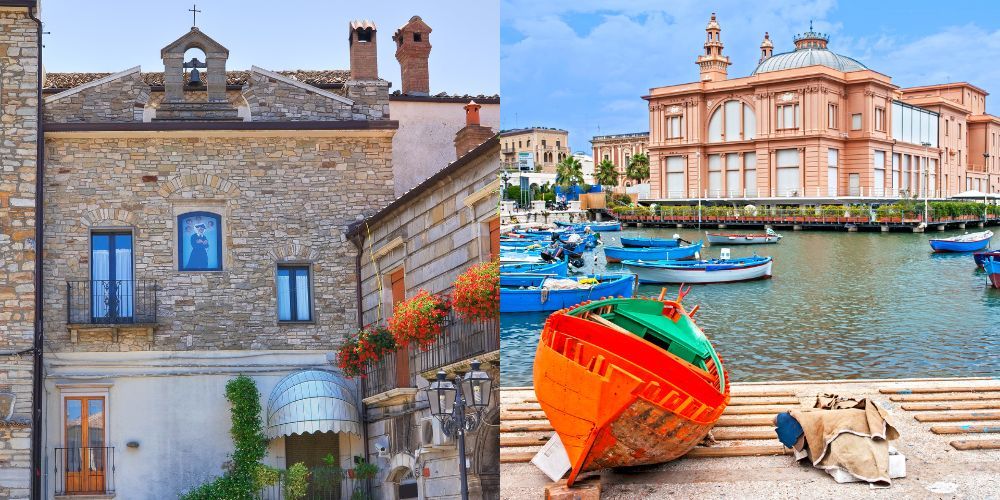
If you want to undertake a road trip in Apulia and beyond arriving from outside, your starting stage will most likely be Bari. In fact, the Apulian capital, between road connections, station, port and airport, is certainly the city all over the heel of Italy providing the best solutions for what regards national and international tourist mobility. The journey towards Roseto Valfortore and further in Campania towards Naples begins! But first, how about visiting one of the most symbolic attractions in the city? We are talking about the Basilica of St. Nicholas in the old city and the crypt where is buried the saint who nowadays, throughout the world, is symbolically acknowledged as Santa Claus!
Discover Basilica of St. Nicholas, symbol of BariSecond stage: Trani and Barletta
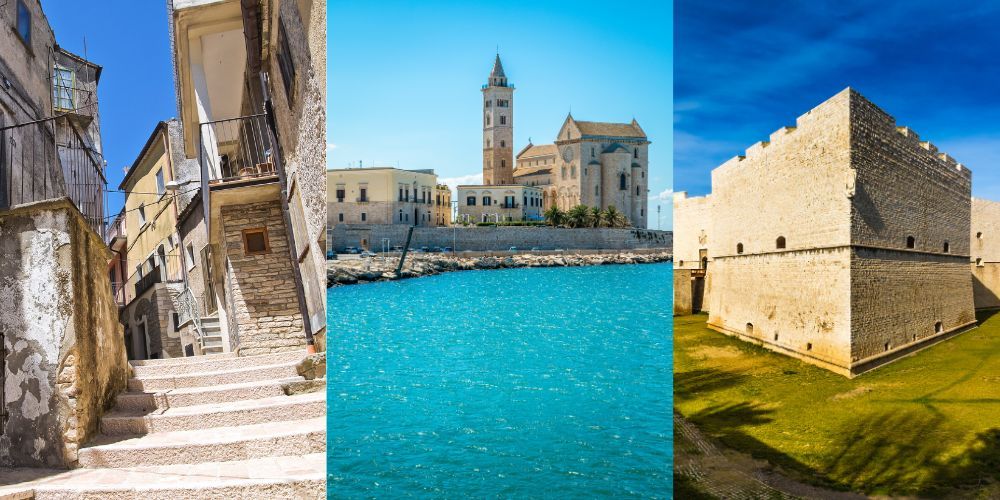
Once your visit to Bari is over, it's time to get in the car and travel North along the highway SS16 Adriatica. Along the drive it is possible to stop in some extremely cool places, such as Giovinazzo and Trani, but we especially recommend you to stop for the next stage in Barletta: discover with us how to best visit the beautiful medieval castle that dominates the city and its museum on the inside, full of very interesting relics for all history enthusiasts.
Discover the Castle of Barletta and its fascinating museumThird stage: Foggia
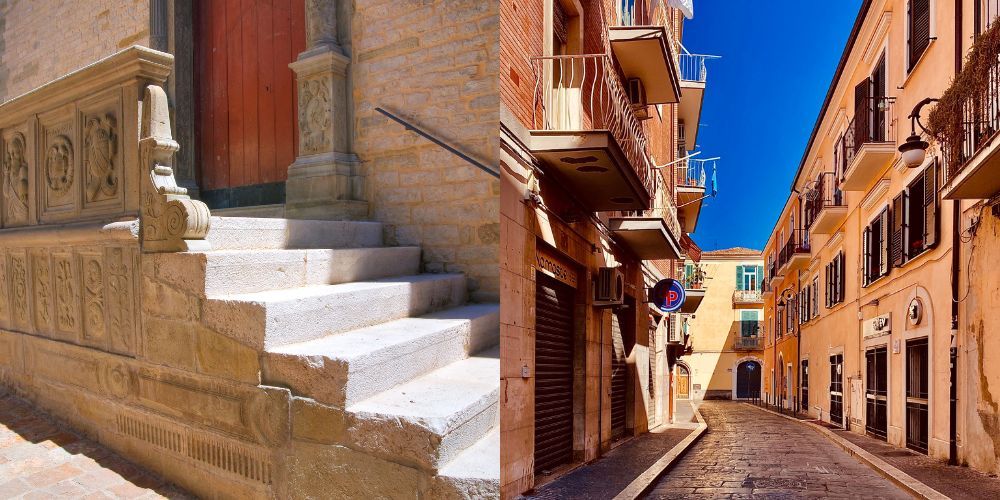
From Barletta the journey continues, this time along the SS113 and SS544 roads to reach Foggia, the provincial capital of the Roseto Valfortore area. We suggest having a break here for a tour of the city, admiring several interesting artistic and architectural attractions. In particular, we recommend the beautiful Cathedral of the Blessed Virgin Mary, the majestic Palazzo Dogana, the evocative Umberto Giordano Theater and the villa dedicated to Karol Wojtyła. Take a tour through the streets and alleys of the so-called Quartieri Settecenteschi (Eighteenth-Century Districts) too, the beating heart in the center of Foggia where you can admire from a close perspective other interesting attractions such as the historic buildings and fountains that embellish the city landscape.
Fourth stage: here we are in Roseto Valfortore
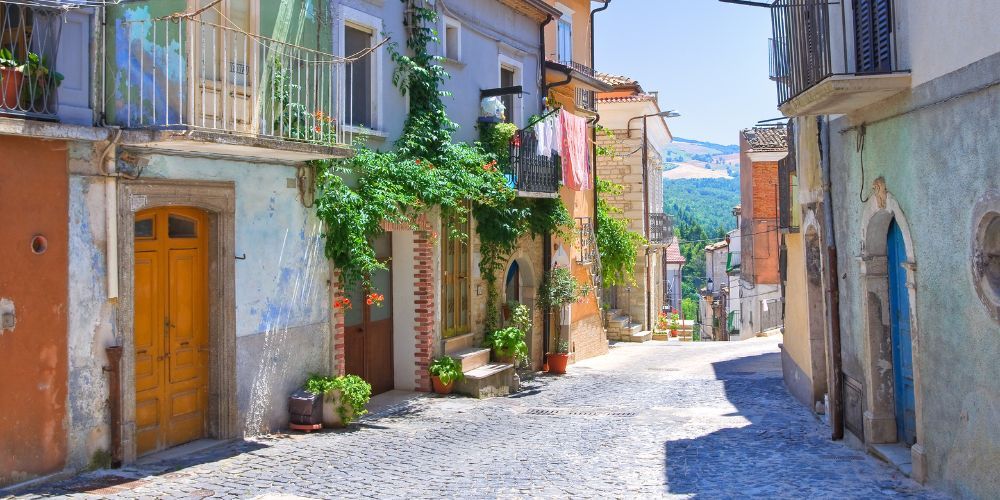
After a pleasant visit to Foggia, we continue driving on the SS17, getti to the historic and fascinating village of Lucera where we recommend visiting the awesome castle, a symbol of its important past. From Lucera, traveling along the SP130 and crossing the beautiful landscape of Daunia, we finally arrive at Roseto Valfortore! Enjoy your visit to the village and its surroundings with the information provided in the previous paragraphs of this article!
Fifth stage: Benevento
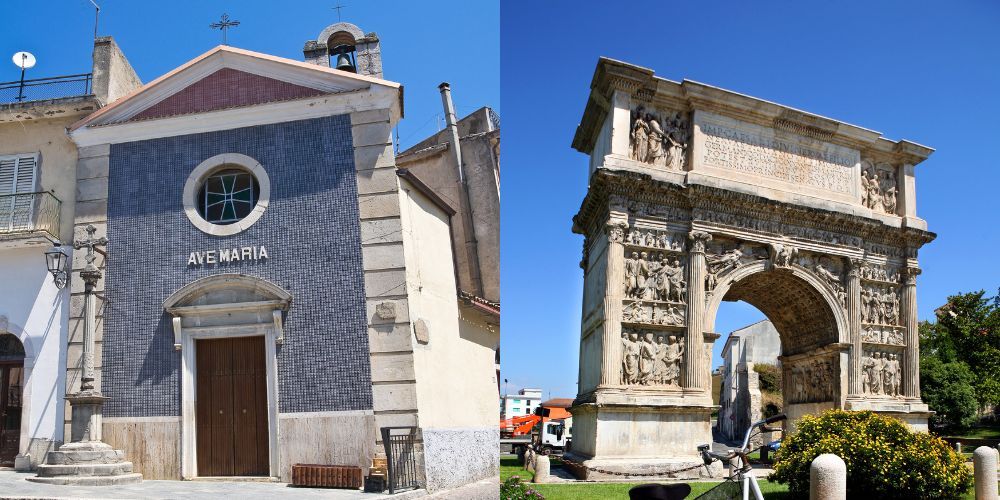
From Roseto Valfortore the road trip continues, driving along the SP129 and SP128 entering the territory of Campania. Here continue driving on the SP68 up to the small village of Castelfranco in Miscano, which can be visited during a short break, and then go on the SP126. The landscape around here is extremely rural and will give you the impression of traveling through remote lands in ancient times; click here to find out more about the Sannio region. But now it's time to head towards Benevento, along the SS90bis: once arrived in the famous city of witches, don't miss the opportunity to visit its beautiful historic centre, rich in art and culture, the ideal time and place for a break dedicated to beauty and, why not, perhaps tasting a delicious mostacciolo with liqueur, a sweet symbol of the city and known for its goodness.
Sixth stage: Caserta

Starting from Benevento, we now head towards Caserta, an essential stage on a travel itinerary among places, stories and fantastic experiences in Southern Italy. The journey by car continues along the SS372, going beyond the Taburno Camposauro Regional Park, then proceeding on the SP110 and SP335, following the signs for the exit in the direction of Caserta near the monumental Carolino Aqueduct. Once in the city it will be easy to spot the magnificent and splendid Royal Palace of Caserta, a heap of history, royalty and beauty like a precious diamond that embellishes the panorama of this land. Discover it with us!
Discover the majestic Royal Palace of CasertaSeventh stage: Naples
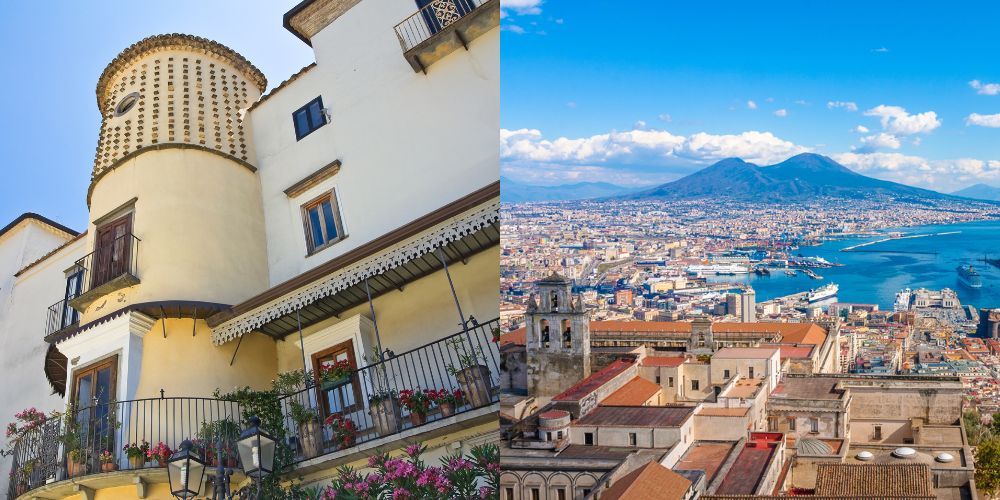
And here we are at the final destination of this long itinerary that took us from Apulia up to Campania: Naples, one of the most beautiful cities in the whole Mediterranean to discover and explor in all its fantastic shades - why not, even within 36 hours! The simplest way to reach the city in the shadow of Vesuvius starting from Caserta is certainly driving on the A1 highway, Autostrada del Sole (Highway of the Sun). And what is the simplest, most comfortable and advantageous way to visit the city? Naturally the Naples Pass, your access key to the best attractions and experiences in the Campania capital! Check it out clicking the button below!
Book Naples Pass, your key to discover NaplesReturn itinerary and other places to explore in Apulia
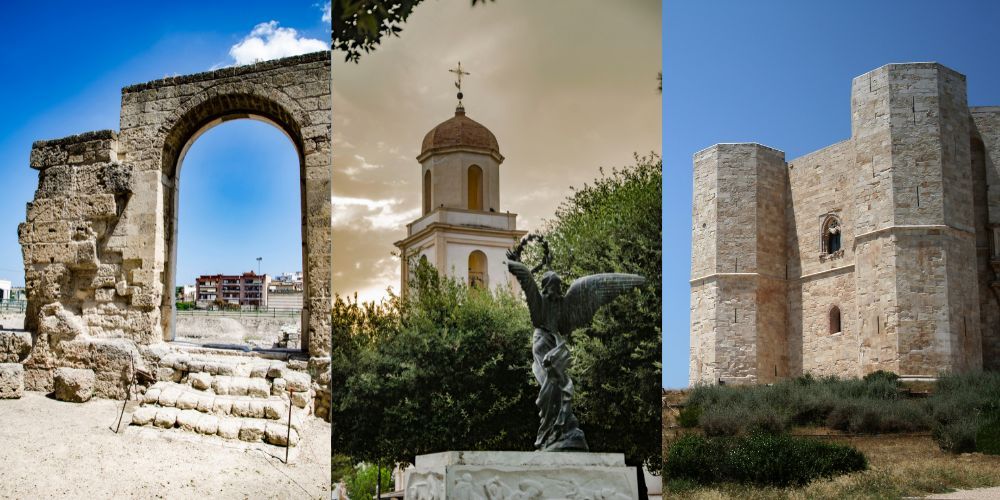
Did you enjoy your visit to Naples with the Naples Pass? And what about the whole trip? So far we have discovered amazing places together and had fantastic experiences... but the emotions are not over yet! Of course, you could decide to stay in Naples forever and enjoy the wonders of this splendid city, but if you want (or need!) to return to Apulia then the route to follow is quite simple. Starting from the Easter-Most area of the city you have to drive to the SS162dir and then move onto the A16 highway near Pomigliano d'Arco, following a long route that cuts South Italy in two parts returning to the province of Barletta-Andria-Trani; here, near Canosa di Puglia it is possible to get onto the A14 highway and drive for a short route to Andria, where we recommend to leave the motorway.
This will be the starting point to add an additional stage to this fantastic itinerary. We suggest you driving along SS170 South to discover the unique landscape of Murge and, above all, its most precious gem: Castel del Monte! From here, following the directions to move towards Ruvo di Puglia, Bitonto and Modugno, it will be easy to finally return to Bari: before getting back home, here you can treat yourself to a truly special reward, visiting the most beautiful locations in the city while tasting some of the best specialities, such as focaccia, in a fantastic street food tour to put a delicious final signature on your stunning travel itinerary with us!
Enjoy your delicious reward with the street food tour in BariAbout the author
Written on 15/09/2023

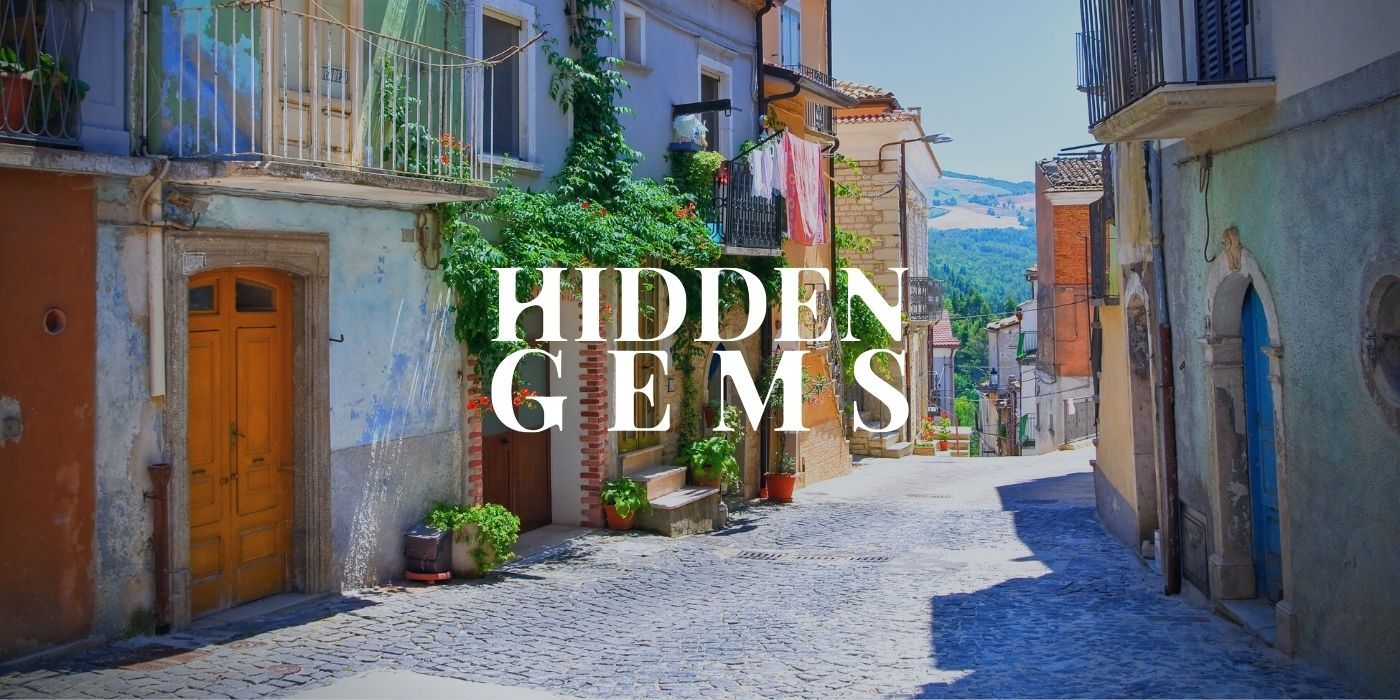

Massimiliano Antonio Primi
Roseto Valfortore is a village in Daunia framed by greenery and full of food specialities, a must-visit stage traveling through Apulia and Campania!